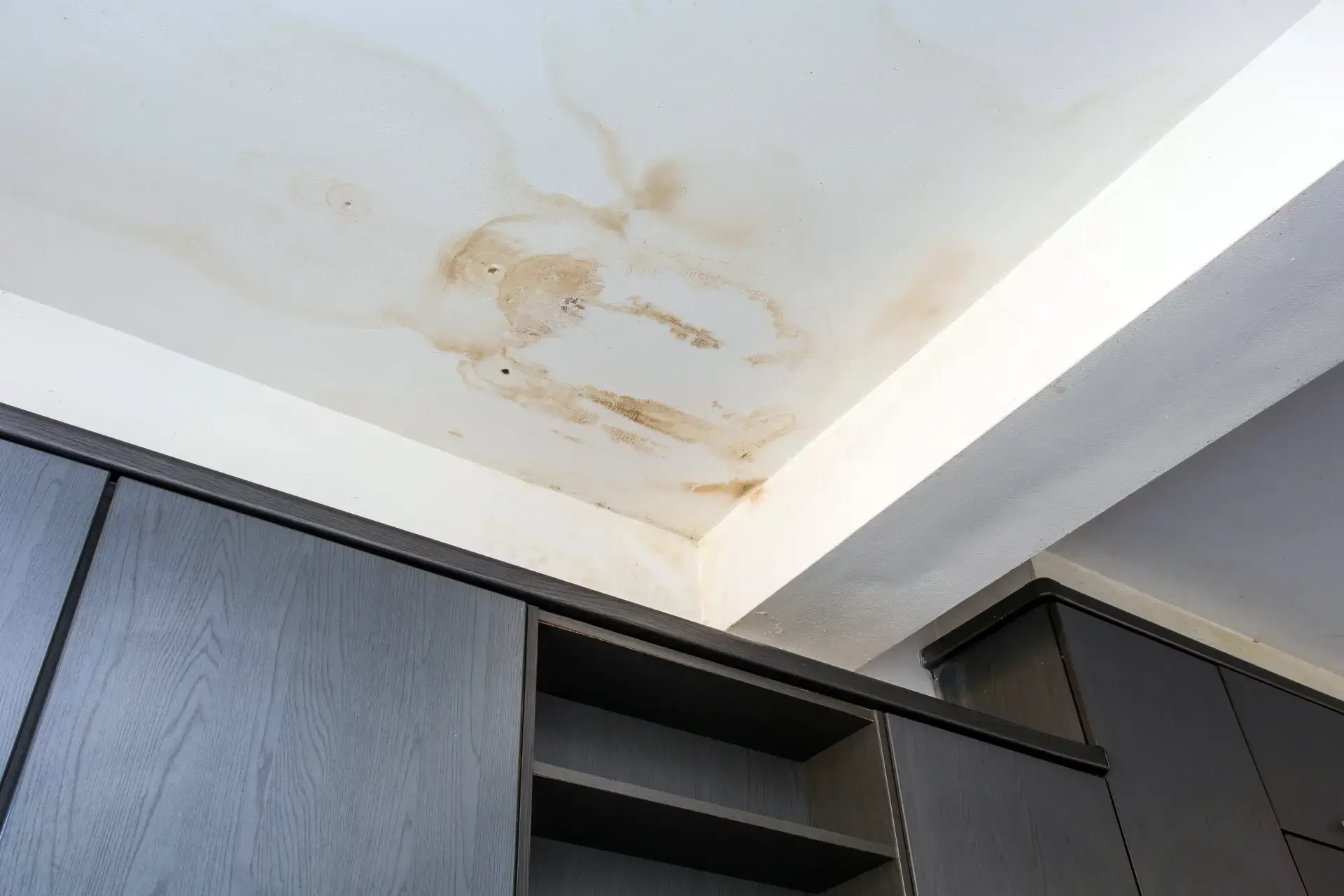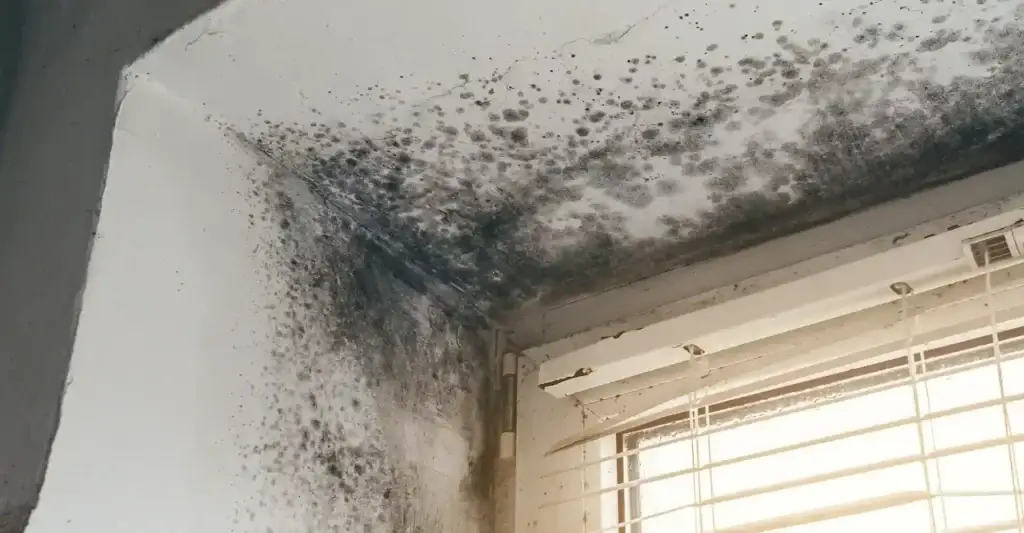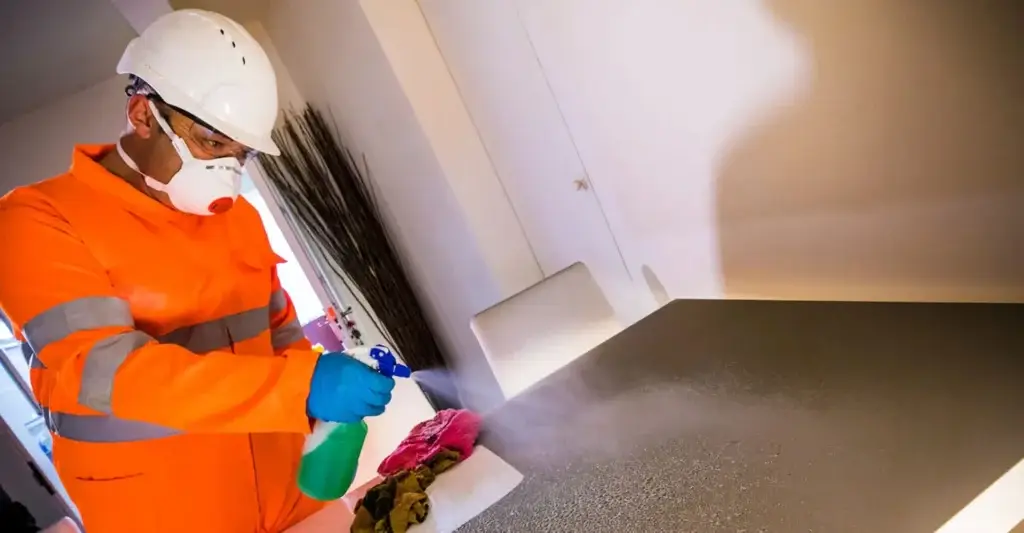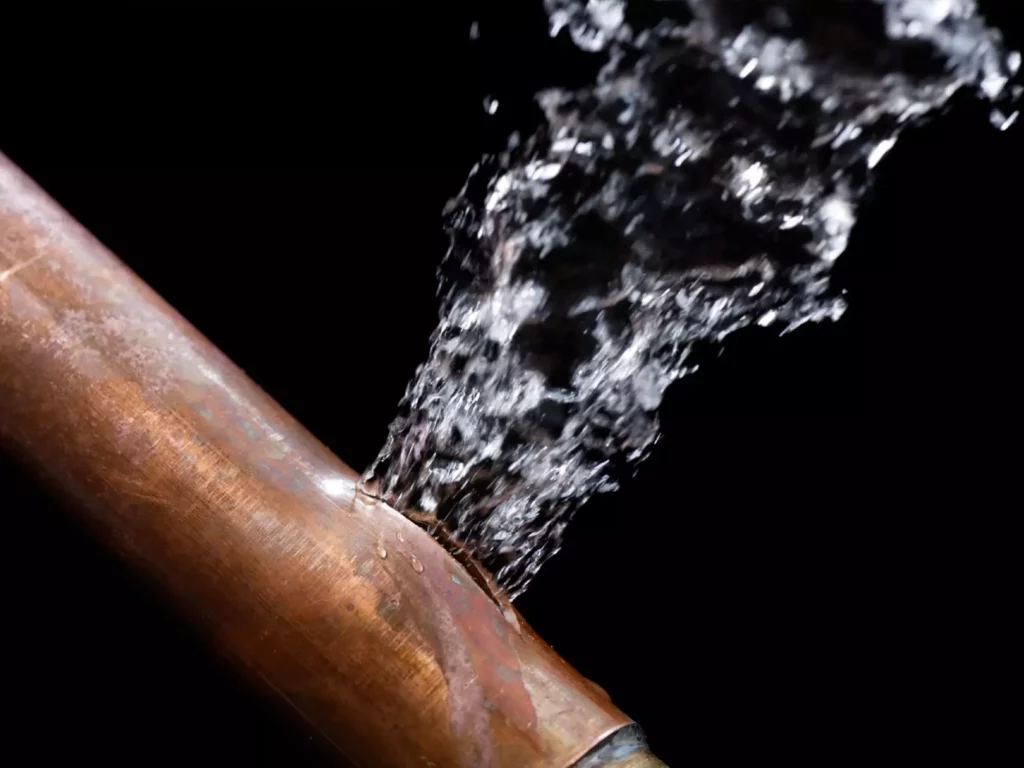There’s nothing quite like the feeling of discovering a water leak. It can feel like a punch to the gut. The damage, the mess, the worry, it’s a massive headache. You’re not alone. According to a 2023 report from Affinity Water, a staggering 68% of UK households have experienced a water leak, costing a collective £697 million each year. That’s a huge problem, and it’s a clear sign that we need to be more vigilant about spotting the signs early on.
But what if the leak is hidden? How can you tell if that strange patch on the ceiling is a sign of something much worse? By learning to identify the subtle and not-so-subtle clues, you can catch a leak before it turns into a major disaster.
In this blog, we’ll walk you through the five most common signs of a water leak. We’ll explain what to look out for, what it means for your home, and, most importantly, what to do next to get the problem fixed and protect your property and your wallet.
Skip to:
The appearance of damp patches
1. A mysterious damp patch
A damp patch is often the most obvious sign of a water leak. It’s like your home is trying to tell you something is wrong. You might notice a dark, discoloured stain on a wall, a ceiling, or a floor. These patches appear randomly and will continue to grow over time if the leak is not addressed.
The location of the damp patch can give you a clue as to the source of the problem. For example, a stain on the ceiling below a bathroom might indicate a leak from a shower tray or toilet. A damp patch on an internal wall could be a hidden pipe.
Don’t ever ignore a damp patch. Even a small leak can saturate the building materials in your home, which can weaken the structure over time. A constant source of moisture can cause wood to rot and decay, compromising the integrity of your property and potentially impacting its value. Acting quickly to find the source of the leak and repair it is the only way to prevent this kind of serious damage.

2. An unexpected jump in your water bill
Not all leaks are visible. A slow, persistent leak can be draining water (and your money) for months without you ever seeing a single drop. In these cases, your water bill becomes your primary warning system. If you notice a sudden and unexplained spike in your bill, especially when your water usage habits haven’t changed, a hidden leak is the most likely culprit.
Think of it this way: a small leak that drips just once every few seconds can waste thousands of litres of water a month. A more significant leak could waste tens of thousands of litres, adding a hefty extra cost to your bill. For example, a large leak could waste up to 72,000 litres a month, adding over £240 to your monthly bill. That’s an extra £2,880 a year that you could be saving! Your water meter is a silent witness to a leak, and if the numbers are climbing, it’s a clear sign that you have an issue that needs to be addressed.
3. A sudden drop in water pressure
Have you noticed your shower becoming a sad trickle? Or maybe your taps don’t have the same force they used to? A sudden and unexplained drop in your home’s water pressure can be a significant indicator of a water leak.
Here’s why: a leak in your plumbing system allows water to escape, which reduces the overall volume and pressure in your pipes. It’s like a hole in a garden hose; the water that was meant to be delivered to your tap is instead escaping into a wall or under your floor. This isn’t just an inconvenience; it can also put a strain on your entire plumbing system and appliances. A sudden drop in pressure is a warning sign that should not be ignored. By catching this sign early and calling in an expert, you can prevent more expensive damage down the line.
4. Mould growth
Mould needs two things to grow: a food source (like drywall or wood) and moisture. A hidden water leak provides a perfect, continuous source of moisture for mould to thrive. If you start seeing patches of mould growth in unusual places, like on a wall that isn’t in a bathroom, or on your ceiling, it’s a very strong indication that you have a hidden leak.
It’s important to understand that mould is a form of secondary damage. By the time you see it, the leak has likely been present for a while. However, this doesn’t mean it’s too late to prevent further damage. In fact, it’s a critical warning sign that the problem is escalating.
The dangers of mould exposure should not be understated. Prolonged contact with mould can cause serious health issues, including:
- Respiratory problems: Including asthma and breathing difficulties.
- Allergic reactions: Symptoms like a runny nose, sneezing, and skin rashes.
- Fungal infections: Especially in individuals with compromised immune systems.
- Mental health effects: The stress and anxiety of living in a home with mould can take a toll on your wellbeing.
If you spot mould in a surprising place, you should get a professional damp and mould survey done immediately. It can identify the root cause and helps to create a plan to safely remove the mould and prevent it from returning.
5. Pools of standing water
This is perhaps the easiest sign to notice. Finding a random puddle of water in your home in a place that shouldn’t be wet is a sure sign of a water leak. A puddle in the middle of your living room, a pool of water in a utility closet, or standing water in your basement are all red flags that you have a serious problem on your hands.
This type of leak is a clear indicator that a pipe has either burst or is leaking significantly. Prompt action is crucial to prevent long-term property damage and potential health risks. Never ignore standing water, as it can quickly spread and cause irreversible damage to your floors, walls, and belongings.
The power of professional help
Spotting the signs of a leak is the first step, but what comes next? If you’ve identified any of these indicators, the most effective and safest course of action is to hire a professional water leak detection service.
Professional leak detection experts have the specialised tools and knowledge to locate the leak without causing unnecessary damage to your property. They use cutting-edge technology like:
- Acoustic leak detectors: These listen for the sound of escaping water.
- Thermal imaging cameras: These can see temperature changes caused by a leak.
- Tracer gas testing: To pinpoint even the smallest leaks.
By calling an expert, you can save yourself a lot of time, money, and stress. They’ll find the problem quickly and provide a lasting solution, helping you protect your home and your family from the dangers of water damage and mould. Don’t let a small leak turn into a major disaster.
Need to speak to a specialist urgently? Call 01622 926 505
Frequently asked questions about identifying water leaks
What are the most common signs of a water leak in a house?
The most common signs of a water leak in a house include unexplained damp patches on walls, ceilings, or floors, a sudden and significant increase in your water bill, a noticeable drop in water pressure from taps, new or spreading mould growth, and random puddles of standing water in unexpected areas of your property.
Can a high water bill indicate a hidden leak in my home?
Yes, a consistently high water bill with no corresponding increase in water usage is one of the clearest indicators of a hidden water leak. Even small, unaddressed drips can waste thousands of litres of water per month, leading to a substantial and unexplained rise in your utility costs.
What does a sudden drop in water pressure mean for my plumbing?
A sudden drop in water pressure from your taps and showers is a strong indicator of a leak within your plumbing system. This reduction in pressure means water is escaping somewhere before reaching your fixtures, limiting the flow and potentially placing strain on your overall water system.
Are damp patches on walls or ceilings always a sign of a water leak?
Damp patches appearing on walls, ceilings, or floors are a very common and often obvious sign of a water leak. These patches typically emerge close to the leaking pipe and will grow if the leak is not addressed, leading to significant water damage, weakened structures, and potentially mould growth.
Does mould growth in a property automatically mean there's a water leak?
While not every instance of mould implies a major leak, mould growth often indicates a persistent source of moisture, which can frequently be a hidden water leak. Mould thrives in damp conditions, and its presence, especially in unusual areas or spreading quickly, can be a clear sign that a leak has been present for some time, providing the necessary moisture for its development.
What should I do immediately if I suspect a water leak in my property?
If you suspect a water leak in your property, you should act quickly. First, turn off the main water supply to prevent further damage. Then, document the signs (photos of damp, bill increases). Finally, contact a professional water leak detection company to accurately locate the source of the leak and arrange for prompt repairs, preventing long-term property damage and health risks.
What are the potential long-term damages of an undetected water leak?
An undetected water leak can cause severe long-term damages, including structural weakening of your property’s foundations and walls, rot in wooden components, extensive water damage to flooring, plasterboard, and insulation, and widespread mould growth. These issues can lead to significant repair costs, property devaluation, and serious health problems for occupants.

Dave Knight - Leak Detection Technical Manager
With over 26 years' experience in property damage restoration, our Leak Detection Technical Manager is a seasoned expert. He brings a specialised focus of 21 years in leak detection and trace & access claims, including 10 years as the owner of a specialist leak detection company. He uses advanced, non-invasive technology to find leaks with minimal disruption in both domestic and commercial settings. His extensive water leak detection qualifications, including WRAS and BDMA, and his experience leading projects across the UK and Europe, highlight his expertise.





















